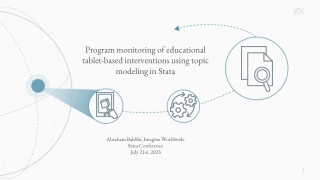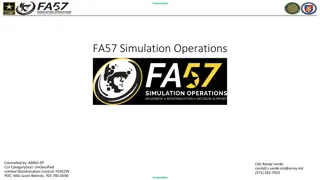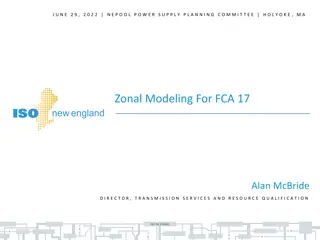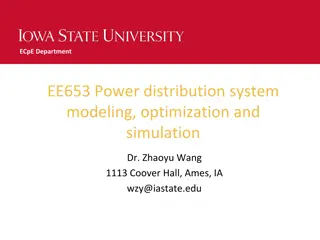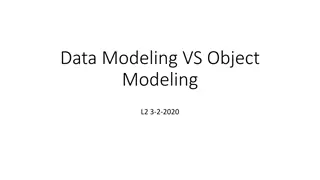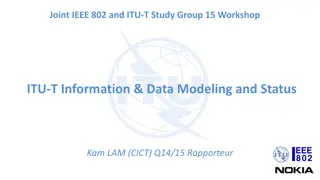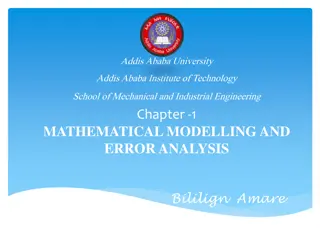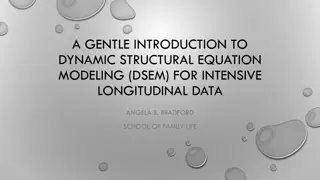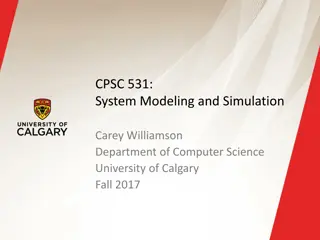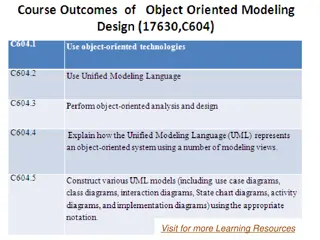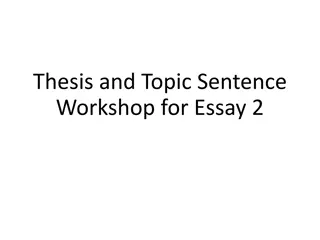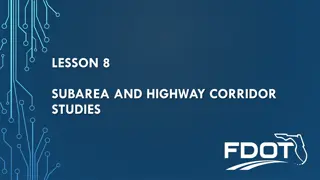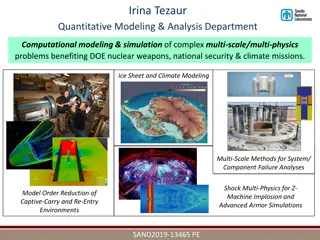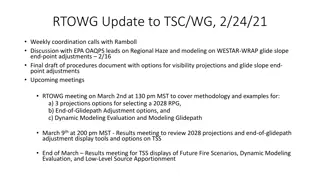
Understanding Unsupervised Learning and Topic Modeling
Explore the world of unsupervised learning through topic modeling, where documents are analyzed to uncover hidden topics. Learn how algorithms process data, create document-term matrices, and apply dimensionality reduction for efficient topic extraction. Dive into the realm of document similarity measurement and discover the significance of topic vectors in representing documents. Enhance your knowledge by delving into practical implementations using sklearn for topic modeling.
Uploaded on | 1 Views
Download Presentation

Please find below an Image/Link to download the presentation.
The content on the website is provided AS IS for your information and personal use only. It may not be sold, licensed, or shared on other websites without obtaining consent from the author. If you encounter any issues during the download, it is possible that the publisher has removed the file from their server.
You are allowed to download the files provided on this website for personal or commercial use, subject to the condition that they are used lawfully. All files are the property of their respective owners.
The content on the website is provided AS IS for your information and personal use only. It may not be sold, licensed, or shared on other websites without obtaining consent from the author.
E N D
Presentation Transcript
14.7 Unsupervised Learning: Topic Modeling
Topic Modeling Topic 1 Topic 2 Topic Modelling Algorithm Data Pre- processing Topic k Topic Modeling induces a set of topics from a document collection based on their words Output: A set of k topics, each of which is represented by A descriptor, based on the top-ranked terms for the topic Associations for documents relative to the topic.
Topic Modeling If we want five topics for a set of newswire articles, the topics might correspond to politics, sports, technology, business & entertainment Documents are represented as a vector of numbers (between 0.0 & 1.0) indicating how much of each topic it has Document similarity is measured by the cosign similarity of their vectors
Document-term matrix Given collection of documents, find all the unique words in them Eliminate common stopwords (e.g., the, and, a) that carry little meaning and very infrequent words Represent each word as an integer and construct document-term matrix Cell values are term frequency (tf), number of times word occurs Alternatively: use tf-idf to give less weight to very common words 10,000 words 1000 documents
Dimensionality reduction A dimensionality-reduction algorithm converts this matrix into the product of two smaller matrices Documents to topics and topics to words Document represented as a vector of topics Understand what K3 is about by looking at its words with the highest values Documents about topic K3 are those with high values for K3 Documents similar to D43 will have similar topic vectors (use cosine similarity) X k topics x m words n documents x k topics n documents x m words
Topic modeling with sklearn See and try the notebooks and data in this github repo
Dimensionality reduction There are many dimensionality-reduction algorithms with different properties They are also used for word embeddings General idea: represent a thing (i.e., document, word, node in a graph) as a relatively short (e.g., 100-300) vector of numbers between 0.0 and 1.0 Some information lost, but the size is manageable
Topic Modeling Summary Topic Modeling is an efficient way for identifying latent topics in a collection of documents The topics found are ones that are specific to the collection, which might be social media posts, medical journal articles or cybersecurity alerts It can be used to find documents on a topic, for document similarity metrics and other applications

